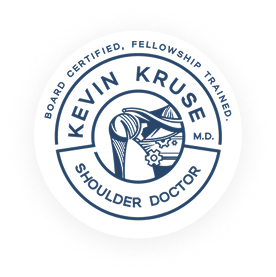Shoulder impingement syndrome is a condition that arises when the tendons of the rotator cuff or the subacromial bursa become compressed within the shoulder joint, leading to pain, limited range of motion, and reduced functionality. An accurate diagnosis is crucial for effective treatment and prevention of further complications, such as rotator cuff tears or chronic pain. In this guide, we’ll explore the diagnostic approaches for shoulder impingement, including physical examinations, imaging techniques, and the role of specialist referrals.
Overview of Shoulder Impingement
Shoulder impingement occurs when the subacromial space (located between the acromion and the humeral head) narrows, causing compression of the rotator cuff tendons or bursa. This condition is common in individuals who frequently engage in overhead activities, such as athletes and those in certain occupations. Early detection and treatment of shoulder impingement can prevent progression to more serious shoulder injuries.
Diagnostic Approaches for Shoulder Impingement
Accurate diagnosis of shoulder impingement involves a combination of physical exams, patient history review, and, if necessary, imaging techniques. The process typically begins with a primary care physician or orthopedist and may involve referrals to specialists in cases requiring further evaluation.
1. Physical Examination
A comprehensive physical exam is often the first step in diagnosing shoulder impingement. During this assessment, a physician will perform specific maneuvers and tests designed to assess pain levels, range of motion, and shoulder strength. These tests can help identify areas of tenderness, muscle weakness, and positions that exacerbate symptoms.
Key Tests for Shoulder Impingement:
- Neer Test: The physician lifts the patient’s arm forward and overhead while stabilizing the shoulder. If this motion triggers pain, it may indicate impingement.
- Hawkins-Kennedy Test: The patient’s arm is positioned at a 90-degree angle in front of their body, and the forearm is then rotated inward. Pain during this motion is often a sign of impingement, as it compresses the structures in the subacromial space.
- Painful Arc Test: The patient is asked to slowly lift their arm laterally (away from the body) and then lower it. Pain typically occurs within a specific range of motion (usually between 60 to 120 degrees) if impingement is present.
- Drop Arm Test: To assess rotator cuff strength, the patient raises their arm to shoulder level and then slowly lowers it. Inability to control this motion or sudden pain during the descent may suggest rotator cuff weakness or injury.
These physical tests help narrow down the potential cause of shoulder pain and are often sufficient to make an initial diagnosis. If further confirmation is needed, the doctor may recommend imaging studies.
2. Patient History and Symptom Analysis
A detailed discussion of the patient’s medical history and symptoms is a critical component of diagnosing shoulder impingement. Physicians typically inquire about:
- Duration and Frequency of Pain: Understanding when symptoms began, their frequency, and any patterns associated with pain helps in assessing the severity of the impingement.
- Activity-Related Pain: Specific activities that aggravate symptoms, such as reaching overhead, lifting objects, or sleeping on the affected shoulder, provide clues to the condition’s nature.
- Previous Injuries: Any prior shoulder injuries or surgeries may have impacted shoulder structure, leading to impingement.
- Occupation and Hobbies: Jobs or hobbies that involve repetitive shoulder use (e.g., sports, manual labor) can increase the risk of shoulder impingement and provide context for the diagnosis.
Combining physical exam results with a patient’s medical history gives doctors a clearer picture and helps determine whether further diagnostic tests are needed.
3. Imaging Techniques
While physical exams are often sufficient for an initial diagnosis, imaging techniques are beneficial in confirming the diagnosis, assessing the extent of tissue damage, and planning treatment. Here are some of the most common imaging methods used for shoulder impingement:
X-Ray
- Purpose: X-rays provide a detailed look at the bones in the shoulder, helping to detect structural issues that could be causing impingement, such as bone spurs, arthritis, or abnormal acromion shapes (hooked or curved).
- Process: X-rays are quick and non-invasive, allowing physicians to identify if bony structures are contributing to reduced subacromial space or if degenerative changes are present.
Ultrasound
- Purpose: An ultrasound can visualize soft tissues, including tendons, ligaments, and bursa. It is often used to detect inflammation in the rotator cuff tendons and to assess the condition of the bursa.
- Process: Ultrasound imaging is a non-invasive procedure that uses sound waves to create images of the shoulder’s soft tissues in real-time, making it ideal for diagnosing conditions that worsen with movement.
Magnetic Resonance Imaging (MRI)
- Purpose: MRI provides the most detailed imaging of the shoulder joint, including soft tissues. It’s commonly used to detect rotator cuff tears, tendon damage, and bursal inflammation, making it essential if a more serious injury is suspected.
- Process: MRI is a non-invasive imaging method that uses strong magnets and radio waves to create detailed cross-sectional images of the shoulder. MRI is especially useful if surgery is being considered or if previous treatments have been unsuccessful.
CT Scan with Arthrography
- Purpose: While not typically the first choice, a CT scan with contrast dye (arthrography) can provide detailed images of the shoulder’s bony and soft tissue structures, often used for complex cases or pre-surgical evaluations.
- Process: This procedure involves injecting a contrast dye into the shoulder joint, followed by CT imaging. It’s more invasive than standard MRI or ultrasound but provides highly detailed images, useful in cases where other imaging tests have been inconclusive.
4. Specialist Referrals
If initial diagnostic efforts are inconclusive, or if the case is particularly severe, a referral to a shoulder specialist, such as an orthopedic surgeon or sports medicine specialist, may be recommended. These specialists may:
- Perform Advanced Diagnostic Tests: Specialists often have access to advanced diagnostic tests and may use dynamic ultrasound techniques or conduct arthroscopic evaluations to better understand the impingement.
- Provide Targeted Treatment Recommendations: Based on the findings, specialists can develop a tailored treatment plan, which may include physical therapy, corticosteroid injections, or surgery.
- Assess for Surgical Intervention: In cases where conservative treatments have failed, specialists evaluate the need for procedures such as subacromial decompression surgery, which involves reshaping the acromion or removing bony growths to relieve impingement.
Diagnosing Shoulder Impingement: The Importance of a Comprehensive Approach
Shoulder impingement diagnosis relies on a systematic approach that combines physical exams, imaging techniques, and specialist expertise if needed. This comprehensive process ensures accurate identification of the underlying cause and helps in developing an effective treatment plan tailored to the patient’s unique needs.
FAQs
- How is shoulder impingement diagnosed without imaging?
Many cases can be diagnosed with a physical exam, as specific movements and tests reveal patterns of pain indicative of impingement. Imaging is generally used to confirm the diagnosis or to rule out more serious issues. - What type of doctor should I see for shoulder impingement?
Start with a primary care physician, who may refer you to an orthopedic specialist if further evaluation or treatment is needed. - Can shoulder impingement be mistaken for other conditions?
Yes, shoulder impingement shares symptoms with conditions like rotator cuff tears, bursitis, and frozen shoulder. Comprehensive exams and imaging help differentiate these conditions. - How effective is MRI for diagnosing shoulder impingement?
MRI is highly effective, providing detailed images of soft tissues, including the rotator cuff and bursa, which are essential in diagnosing and assessing the extent of shoulder impingement. - When is surgery considered for shoulder impingement?
Surgery, such as subacromial decompression, is considered when conservative treatments (e.g., physical therapy, medications) have failed to relieve symptoms or if there is significant structural damage causing chronic pain.
By combining physical exams, symptom assessment, and advanced imaging, doctors can accurately diagnose shoulder impingement and develop a targeted treatment approach. Early diagnosis and intervention are crucial in preventing further injury, preserving shoulder health, and restoring function.

